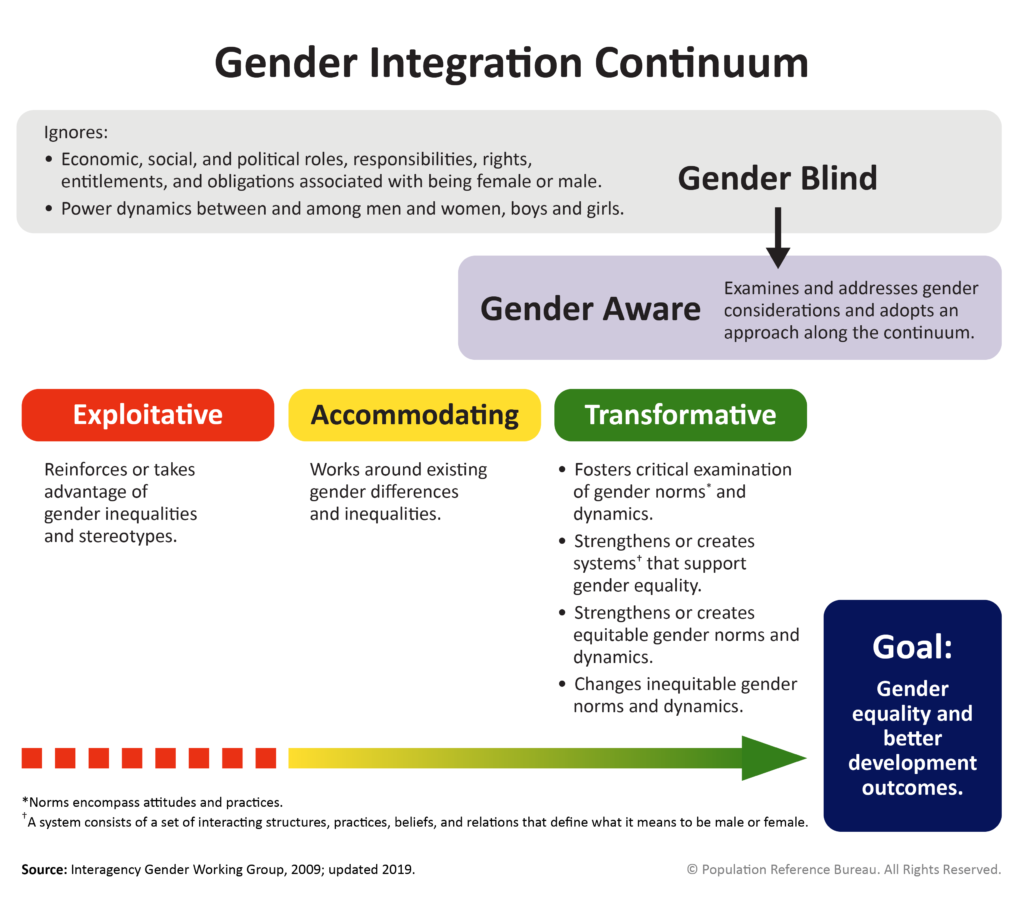Resources
Our training materials can be used to introduce a broad range of audiences and backgrounds to important concepts related to gender and health. Each training course focuses on one of five themes that complement the CORE Gender 101 agenda: Gender Integration, HIV + Sexuality, Safe Motherhood, Gender-Based Violence, and Constructive Male Engagement. The courses are designed to meet the geographic and technical needs of cooperating agencies, USAID Missions, and specific projects. Materials range from basics such as using a shared gender vocabulary and programmatic guidance, to user guides on how to conduct a gender analysis, to exercises for gender trainings. The trainings are geared to be used by anyone and with any audience, even those learning about gender for the first time!
Our popular Gender Integration Continuum framework is an important tool to assess how programs do (or do not) address gender and move them toward more gender-transformative actions. An updated User’s Guide for facilitating training on use of the continuum is available, along with other materials.
Community‐Based Father Education Intervention on Breastfeeding Practice—Results of a Quasi‐Experimental Study
Addressing Maternal Mortality Through Person-Centered Care
Bias in Contraceptive Provision to Young Women Among Private Health Care Providers in South West Nigeria
This paper explores health care providers' biases regarding contraceptive use by adolescent and young adult women, drawing on a study of private health-sector health care facilities in South West Nigeria and how provider bias impacts quality of care and method choice.
Bias in Contraceptive Provision to Young Women Among Private Health Care Providers in South West Nigeria
Health care providers' biases regarding the provision of contraceptives to adolescent and young adult women may restrict women's access to contraceptive methods and affect quality of care. This article encourages interventions that address underlying sociocultural beliefs that create a barrier to proper reproductive health care.
Market-Testing a Smartphone Application for Family Planning: Assessing Potential of the CycleBeads App in Seven Countries Through Digital Monitoring
The CycleBeads app, a digital platform using a modern method of family planning, helps women track their cycles and achieve or prevent pregnancy. The app's developer conducted social media campaigns in seven countries to monitor cost, distribution, and understand users and their experiences. The campaign results suggest that the app’s low-cost approach makes it accessible to women.


